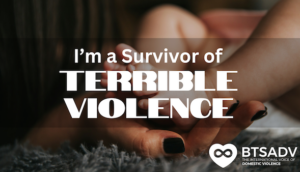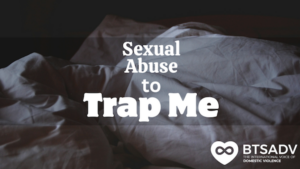
By Jenn Rockefeller
Domestic violence is to physically, emotionally, mentally, financially or sexually harm another in the name of power and control. Intimidation and threats are abound in each of these forms of abuse. Sexual abuse is just one spoke in the wheel that the abuser will use to their advantage in the quest for power and control. Narrower still, is the subtle form of sexual abuse known as stealthing, which is just one more way for the abuser to maintain power and control over the victim.
Definition
According to Bedsider, stealthing is a term for the act of removing a condom before or during sexual intercourse without the consent or knowledge of one’s partner.
What it can look like
Stealthing is a more specific form of reproductive coercion. According to the American College of Obstetricians and Gynecologists, reproductive coercion (like stealthing) includes “hiding, withholding, or destroying a partner’s oral contraceptives; breaking or poking holes in a condom on purpose or removing a condom during sex in an attempt to promote pregnancy; not withdrawing when that was the agreed upon method of contraception; and removing vaginal rings, contraceptive patches, or intrauterine devices (IUDs).”
In an abusive relationship, stealthing is just one more tactic in the abuser’s arsenal. You and your partner may have agreed to use a condom. But, if you and the abuser are engaged in sexual activity and he throws caution to the wind and removes the condom despite your objections, he is committing an act of stealthing. (In the previous situation, the male was used as the perpetrator, but please note that either a man or woman can stealth.)
Why it’s abuse
Stealthing is abuse. There is no sugar-coating that. Some people might consider it a “sexual trend”; however, it is anything but that. It is not cool or the newest fad. It is abuse because it takes away our right to say no. It changes the agreed upon sexual interaction. Stealthing violates a person’s reproductive rights by subjecting them to pregnancy and sexually transmitted diseases.
According to Teen Health Source, stealthing is considered sexual assault and rape because it is done without the other partner’s consent. The site explains that the perpetrator is changing the terms of the previously agreed upon conditions of sexual intercourse. When that happens and the perpetrator removes the condom without the consent of the other person, it now becomes non-consensual sex.
Where you can go for help
If you feel you’ve been a victim of sexual assault like stealthing, there are many places (and organizations) that you can contact for help. Below is a short list:
· National Sexual Assault Hotline – You can contact 1-800-656-HOPE (4673) and be connected to a trained staff member who can provide confidential support and guide you to local places to help you.
· National Domestic Violence Hotline – Contacting the hotline at 1-800-799-7233 will put you in touch with trained professionals who will be able to guide you. Their website provides a wealth of additional resources.
· The National Dating Abuse Hotline (Love is Respect) – Phone calls, texting and online chatting are available to those who need to seek help.
· National Sexual Violence Resource Center – This resource center has a wealth of information to help those in need and can put them in touch with their local rape crisis center.
· Office on Women’s Health – OWH lists resources by state to provide area-specific help.
If none of the above options are available to you, or you feel you are not safe to make phone calls to a hotline, you can always seek assistance in your local hospital emergency room.
If you or someone you know is in an abusive relationship, there is help. You can visit the Break the Silence website at www.breakthesilencedv.org or chat with one of our helpline advocates at 855-287-1777.









